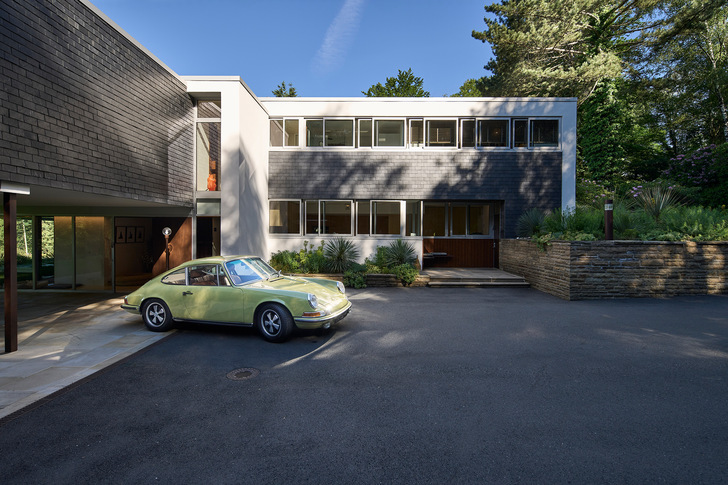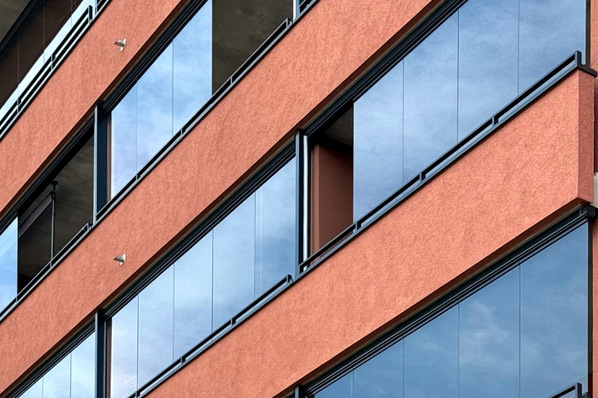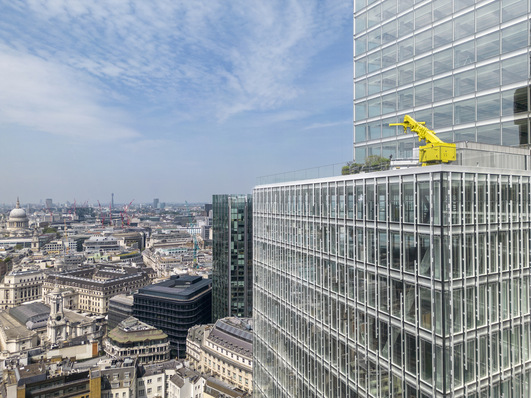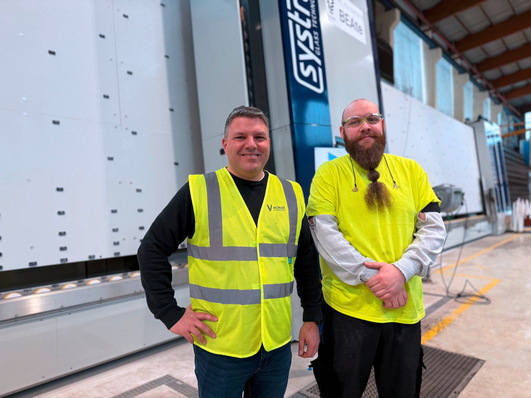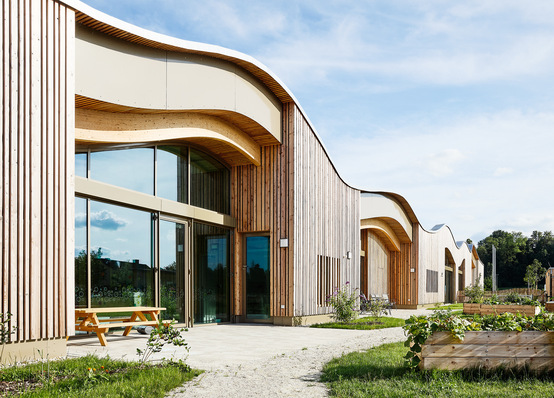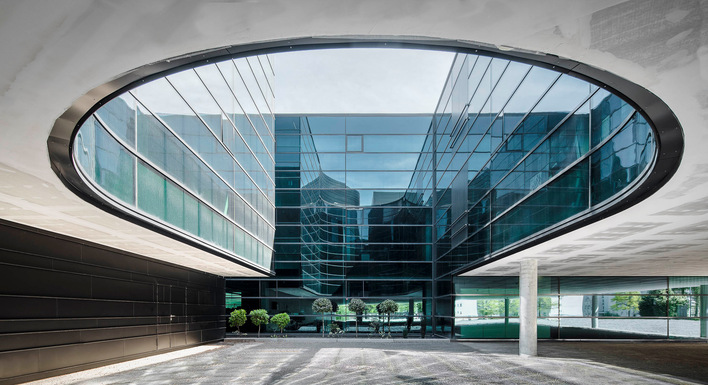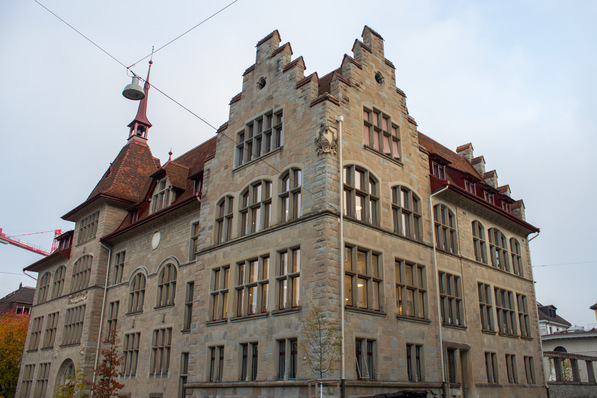With its open-plan room concept and link to nature through the large glass fronts, the Kemper House reflects the American archetypes of the 1960s. When the building was put up for sale in 2016, Manfred and Sarah Hering snapped it up. Five years later, the Kemper House now stands proud once again, elegant as it was when it was built. This is also thanks to the custom fabrication of the large sliding units by Schüco and Alubau Puhlmann.
Austrian-born Richard Joseph Neutra was one of the most famous architects of the 20th Century. He played a pivotal role in defining the Californian architectural scene of the 1950s and 60s with his modernist houses. Even today, his buildings continue to inspire generations of architects, be it through the slim sightlines of his designs, with flat, overhanging roofs and large expanses of window and water features which connect the architecture to its surroundings, or the exciting room layouts within the building structure. For the Kemper family, Neutra had designed three staggered building structures, which are loosely connected across a striking plot of land on a hill in Gelpetal. After just seven years, the open living space was passed on to new owners. The conversion work carried out during this time had completely changed the original character of the house, so the Herings set to work with the aim of restoring it to its former glory.

Schüco International KG
Flowing transitions between rooms
One quality of Neutra's buildings is the timelessness of the floor plans and room connections. Everything a home could need was found in the Kemper house across 380 square metres – from the au pair's living space right through to the gentleman's room. Even today, the large, open living space is the heart of the home and faces the garden. Floor-to-ceiling glass fronts with large sliding units dissolve the boundaries between indoors and outdoors. A typical trait of Neutra in the form of a pergola with "spider legs", or supported roof beams that project out from the facade, extend the living space into nature. The kitchen with adjoining utility rooms face the inner courtyard and birch grove, while the private quarters with bedrooms and bathrooms are located on the first floor. Only the former indoor swimming pool has a new use as a presentation space for the best models in the company's Porsche collection. The volume is broken up by the staggered building structures and the positioning of reflection pools, which mirror the sky and surrounding nature.
Seek and you shall find
Renovating a building presents many challenges to everyone involved. Restoring the house to its original state was the greatest challenge. “We learnt something every day during the renovation,” explains Manfred Hering. “Old plans and images from the construction period as well as visits to the nearby Pescher House by Richard Neutra, which remains largely in its original condition, were a great help.”
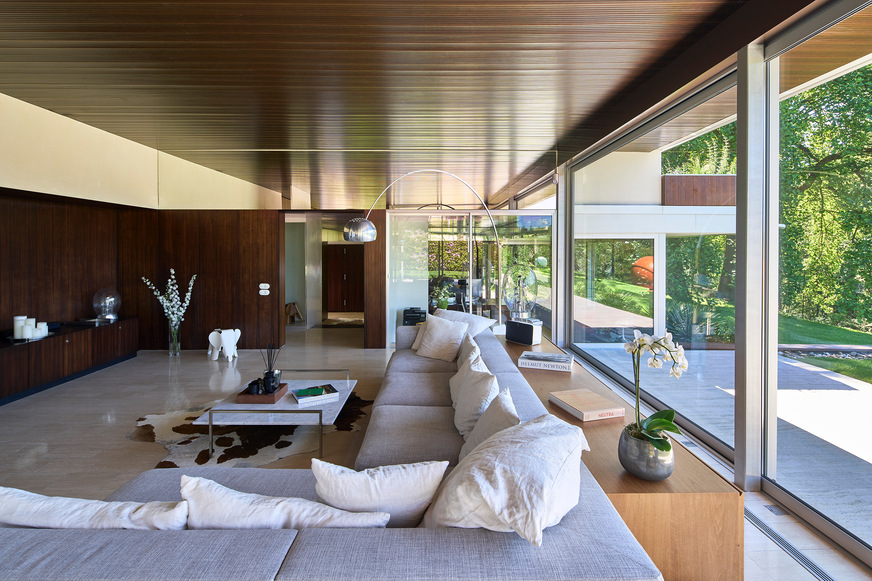
Schüco International KG
Much like with the old Porsches that have been restored so they run as new, the house had to be brought back to its original condition. This included replacing damaged parts as well as updating the technology.
[Henning Larsen to design university building in Innsbruck]
Where it wasn't possible to retain the original features due to damaged materials or those that were unfaithful to the original, a patina was added to the newly installed units. The photo archive of architectural photographer Karl Hugo Schmölz and the careful removal of layers allowed the wall between the living and dining area, which is made from rosewood on one side and ash on the other, to be saved.
The travertine flooring inside and outside was also restored, as were Neutra's horizontal ribbon windows. The clients' approach was unusual for another reason, as they lived in the house throughout the renovation. This was the only way they could properly restore each room and have a direct influence over each decision.
Special facade units
It was a huge challenge to adapt parts of the building to meet today's technical requirements, especially the large fixed glazing and sliding units with their extremely slimline frames and mullions. In some areas, the original windows were retained, serving as a blueprint for the newly fabricated glass units. The similarity with restoring classic cars is uncanny here, with inventiveness and working with the right partners being the recipe for success. Alubau Puhlmann and Schüco worked together to create a special construction that was based on the Schüco ASS 48 system and which meets the structural requirements for large-format units while facilitating manual operation of the sliding doors with their slimline handles.
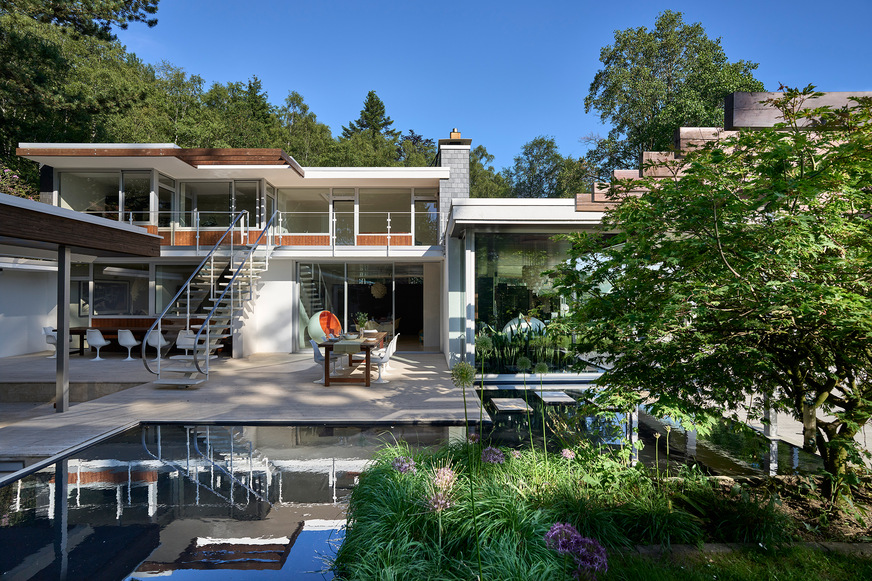
Schüco International KG
[A fire protection system for maximum flexibility in operation]
Double glazing and a double-track design for the sliding units were chosen due to the slimline special construction. New interlock profiles were developed for the thermally insulated sliding system. One of the biggest challenges was to ensure that the fixed and moving units had sufficient weathertightness and locking points. Contactless current transmitters for the locking points are integrated in the narrow outer frames, while the 3D printer from the Schüco Development department was used for the sealing profiles. This was not an everyday task, as confirmed by Josef Heisterkamp from Alubau Puhlmann, who says, "The result is more than worth the many individual steps that were required. The specification for the desired appearance and ease of operation, combined with the possibilities offered by modern technology, are what make the project a masterpiece."
Timeless architecture
When you ask the clients if they'd have done anything differently if Richard Neutra had built the house for them, the answer is clear. The house is perfect the way it is. Six decades after it was built, the house still stands out with its carefully thought-out floor plan and connection to nature. It's a real place of retreat that's not far from the city. It's the biggest compliment you can give to architecture.
For other examples of Neutra’s architecture, see here:







